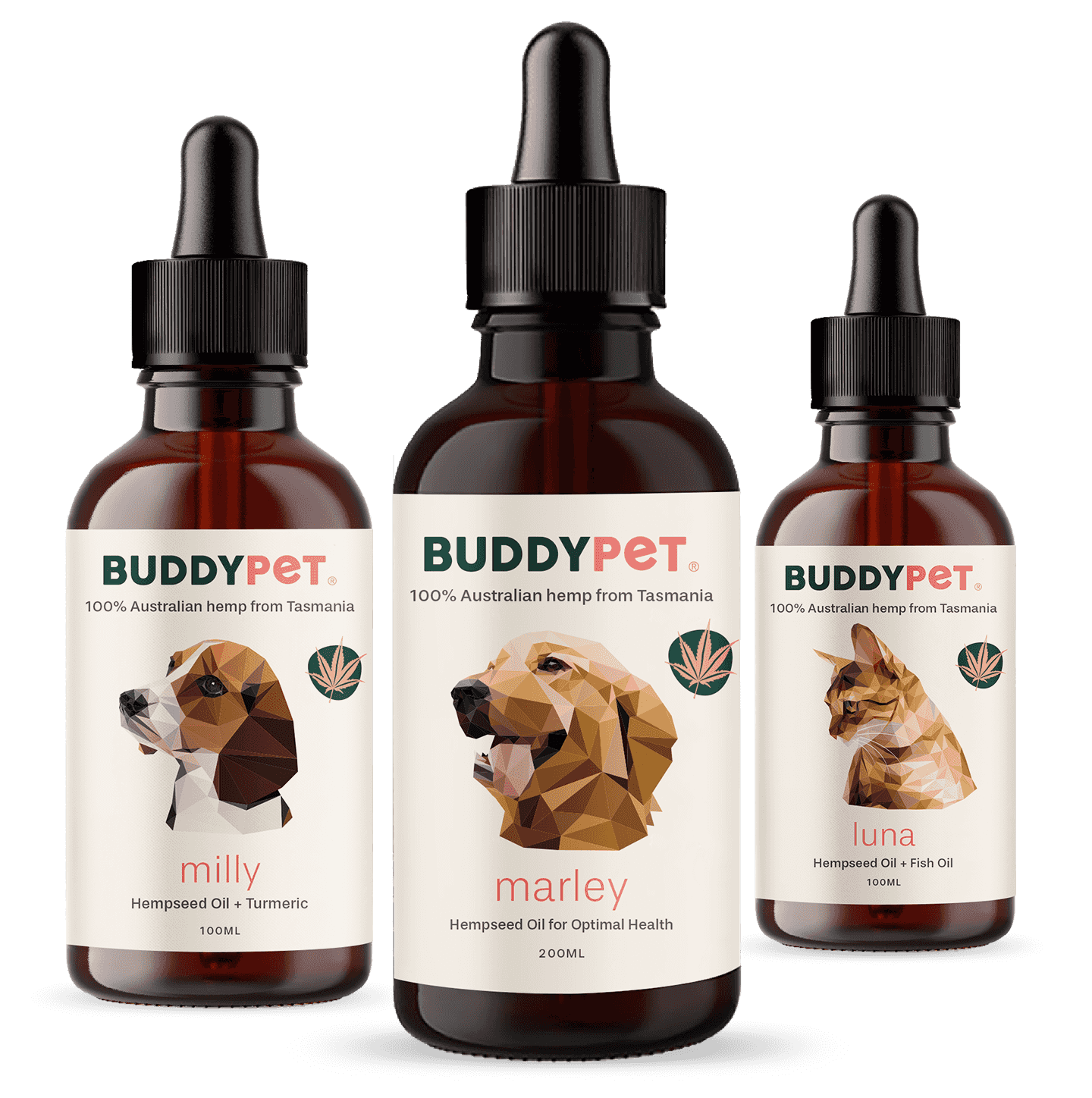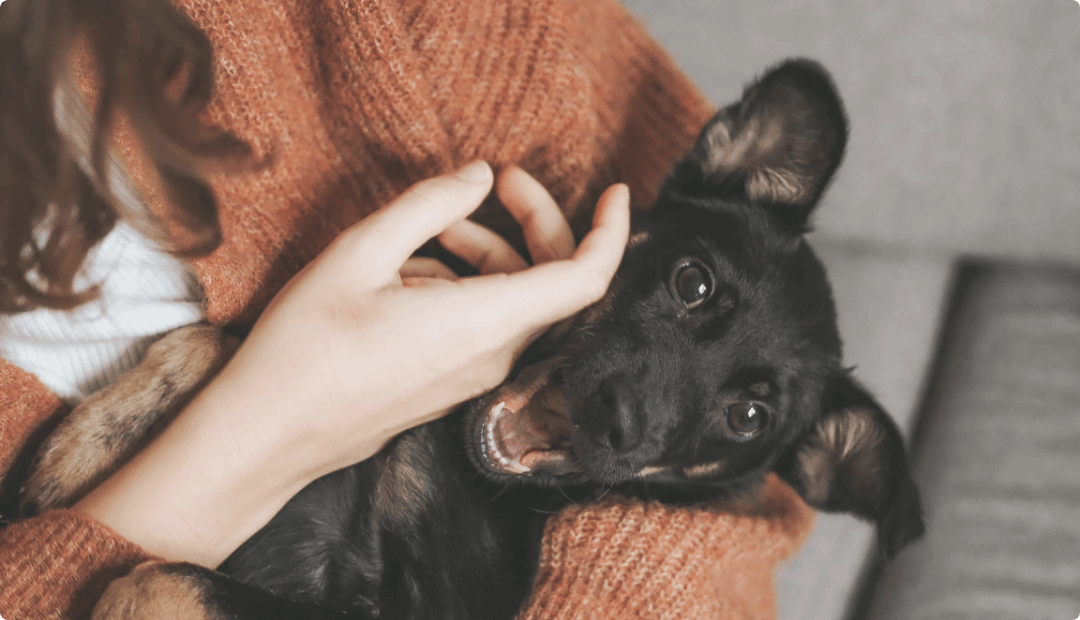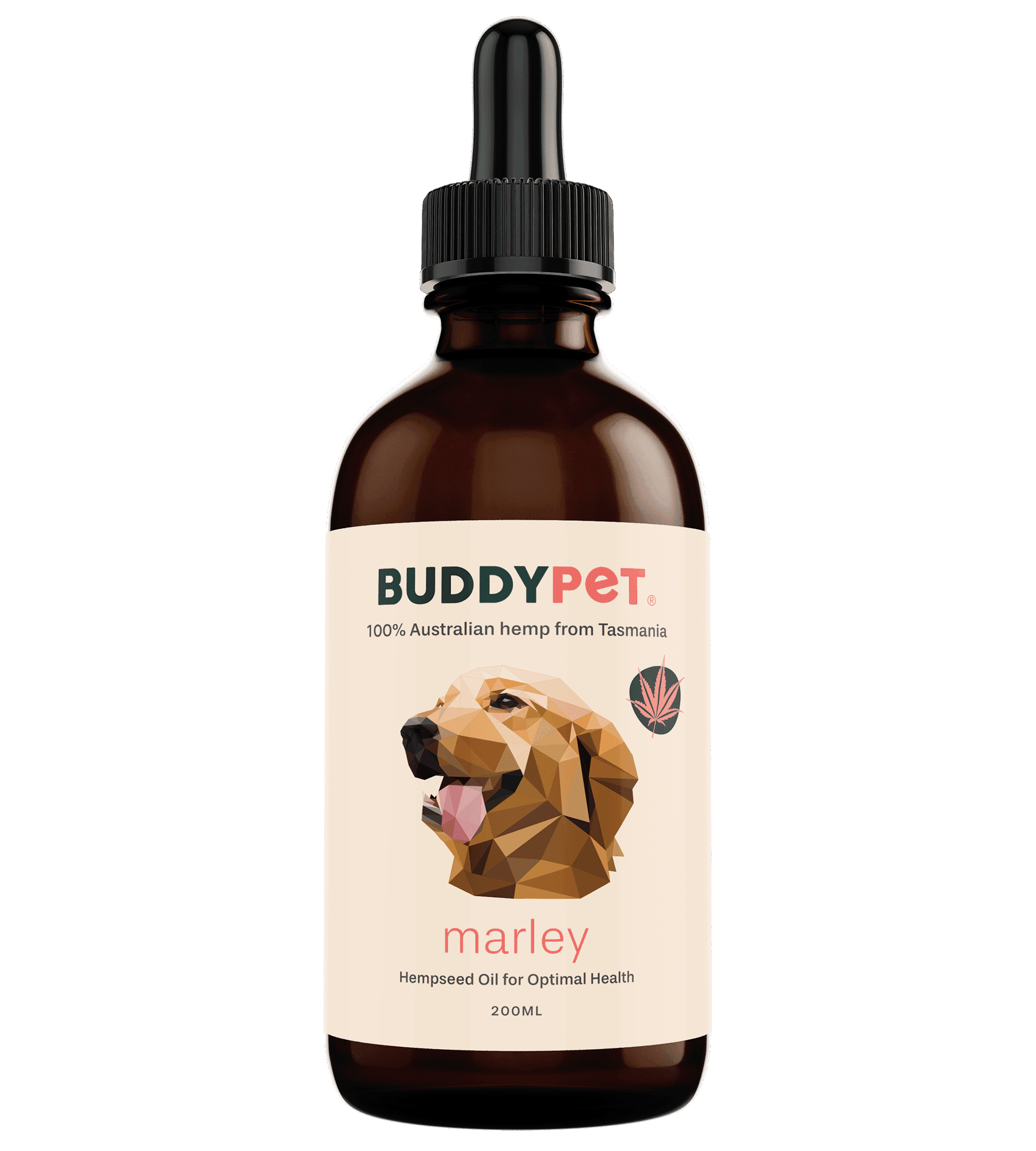Have you recently noticed your older canine companion sprouting some new grey hairs, or maybe they’ve been slowing down on your daily walk? Age is an all too common issue in humans and dogs as it’s an inevitable occurrence, but is there any way you can help your dog’s aging joints and body?
If you’re looking for ways to combat osteoarthritis, or you’re simply wondering what the signs and symptoms are for those dogs that may be suffering from joint pain, then keep reading to find out how you can put that pep back into your old dog’s step.
What is Osteoarthritis in Dogs?
Osteoarthritis, or OA, is the most common form of arthritis and affects over 25% of the geriatric canine population. OA is characterised by degeneration of the joint due to mechanical wear and tear, leading to a loss of joint cartilage and increased friction, causing inflammation, pain and lameness associated with that area. This process is called degenerative joint disease (DJD), leading to osteoarthritis (OA).
If you want to get technical, here is a breakdown of some of the science behind OA and how it affects your dog’s joints.
- The ends of our bones have a specialised cushiony layer of articular cartilage protected by a second layer of membrane called the synovium. Inside the joints is an oily fluid called synovial fluid, which helps to minimise friction, thus reducing wear and tear.
- Over time, the articular cartilage gets worn down through years of the movement. The fibrous tissue and ligaments that bind the joints together also become less flexible with age, which means the surfaces of the bones are moving in ways that can cause more wear and tear. As the cartilage wears down, the surface is not as smooth, which leads to increased friction and subsequent inflammation and pain. This inflammation, in turn, further wears down the cartilage.
- Articular cartilage has little capacity to regrow, so instead, the body starts to try to repair the articular surface by laying down extra bone cells (osteocytes) to fill the areas where joint cartilage has been lost. This process is called remodelling.
- The new bone is not as smooth as the original articular cartilage, so the friction is increased, which adds to the vicious cycle of inflammation, pain and further degeneration of the joint.
Osteoarthritis can also become a problem if a dog is born with a skeletal abnormality, such as hip or elbow dysplasia or luxating patellae (knee caps). In these cases, the joint was either abnormally shaped, or there was too much laxity to the joint socket itself, leading to increased wear and tear earlier in life and later the debilitating OA.
What is the Difference Between Arthritis and Osteoarthritis in Dogs?
Arthritis means inflammation of the joint. Osteoarthritis is the particular type of arthritis caused by mechanical degeneration of the joint due to wear and tear or an abnormal or damaged joint.
It is very common for active and athletic dogs to suffer from osteoarthritis, especially in areas of the body that saw a lot of impacts, such as the knees, elbows and hips. Besides chronic wear and tear, there are other reasons your dog may suffer from osteoarthritis, such as their genetics, breed, weight, gender, exercise levels and diet.
What are the Signs of Osteoarthritis In Dogs?
Symptoms of osteoarthritis can be subtle and sometimes non-specific. It is important to have a veterinarian perform a physical exam to interpret the condition of your dog’s joints and body. Most often, the signs associated with OA are:
- Change in activity: limping, excessive licking over a joint, stiffness, inability to jump, decrease in overall activity.
- Change in personality: clinginess, hiding or even acting aggressively can be signs of pain and osteoarthritis.
- Change in physical appearance: osteoarthritis can cause swelling over the affected joint and firmness where the body has attempted to repair the area with tissue and bone formation. Muscles may also be wasting (atrophying) as they are less active due to pain.
How Can I Help My Senior Dogs Hip and Joint Pain?
As dog’s body and joints age, we can always expect changes in their activity levels and exercise routine. However, it is important that you keep a regular activity schedule without overworking your senior dog’s stressed joints. Besides light exercise, there are several other natural options for controlling your dog’s pain and bringing them some relief from osteoarthritis.
- An appropriate exercise routine: Light exercise is critical. These older dogs aren’t going to be doing any impressive feats of athleticism, so just let them go on their leisurely walk and save the big stunts for the younger pups.
- Weight control and management: Whether your dog was already on the heavy end of the veterinary Body Condition Score or you want to keep them from gaining weight, it’s important to understand how negatively unnecessary pounds can affect their joints and overall quality of life.
- Rehabilitation: Rehab is an excellent resource for dogs that suffer from chronic joint pain and osteoarthritis. There is hydrotherapy, which involves gentle exercise through swimming or even doggy massage! Don’t forget the impressive medical benefits of cold laser therapy and even acupuncture or chiropractic care.
- Joint supplements: Joint supplements are an excellent addition to any dog’s daily routine. Supplements containing Glucosamine and Chondroitin help to protect and rebuild your dog’s ageing joints. Hemp seed oil can help by providing anti-inflammatory support.
- Assistance around the home: There are many ways to improve your arthritic dog’s routine around the house. The first recommendation is to make sure that they have a bed that is orthopedic and provides plenty of cushion for their joints. Keep their bed away from parts of the home that are cold or drafty. Ramps are also a helpful way to assist your dog with getting up and down off furniture or into a vehicle. Make floors non-slip by putting mats or rugs down where your dog walks. Raising food and water bowls, so your dog doesn’t have to bend down too far.
How Hemp Seed Oil Can Improve Your Dog’s Mobility
Another option out there for joint pain is the use of hemp seed oil in dogs. How does hemp seed oil help? Well, it has an impressive secret weapon called GLA, or gamma-linolenic acid, a natural anti-inflammatory fatty acid. Hemp seed oil is one of the very few natural sources of GLA available!
For senior dogs or those suffering from chronic joint inflammation, GLA is essential. Deficiency in GLA leads to increased and ongoing inflammation and immune dysfunction. Dogs can usually get GLA through their diet by converting linoleic acid (LA) to GLA, but this conversion requires a specific enzyme (D6D) and five essential nutrients (magnesium, zinc, vitamin C, vitamin B3 and vitamin B6), all of which are abundant in hemp seed oil.
Your pooch probably gets enough of these five nutrients from their food to support the GLA synthesis, but if there is any doubt or you would like extra support for your aging dog's joints, then you could consider hemp seed oil as a daily dietary supplement.
For advanced stages of arthritis, talk to your vet about hemp CBD oil. Extracted from the leaves and flowers of the hemp plant, hemp CBD oil acts as both an anti-inflammatory and mid-level analgesic. Holistic veterinarians often recommend CBD oil to help alleviate joint pain in senior dogs and dogs with hip dysplasia. Although it’s not a cure for all joint issues, CBD oil can help dogs stay active longer and feel better by easing inflammation caused by worn-down cartilage.
Conclusion: Helping Your Senior Dog’s Osteoarthritis
As we all know, aging is inevitable, but there are ways to make it better for our dogs and us. You can support their joint health and vitality with moderate exercise, veterinary care, and natural health supplements.
For senior dogs or dogs suffering from osteoarthritis, we recommend BUDDYPET Milly. It’s our best-in-show joint supplement for dogs. Add directly to food, or have them lick it straight off a spoon if your dog prefers.
Photo by Rebecca Campbell on Unsplash




